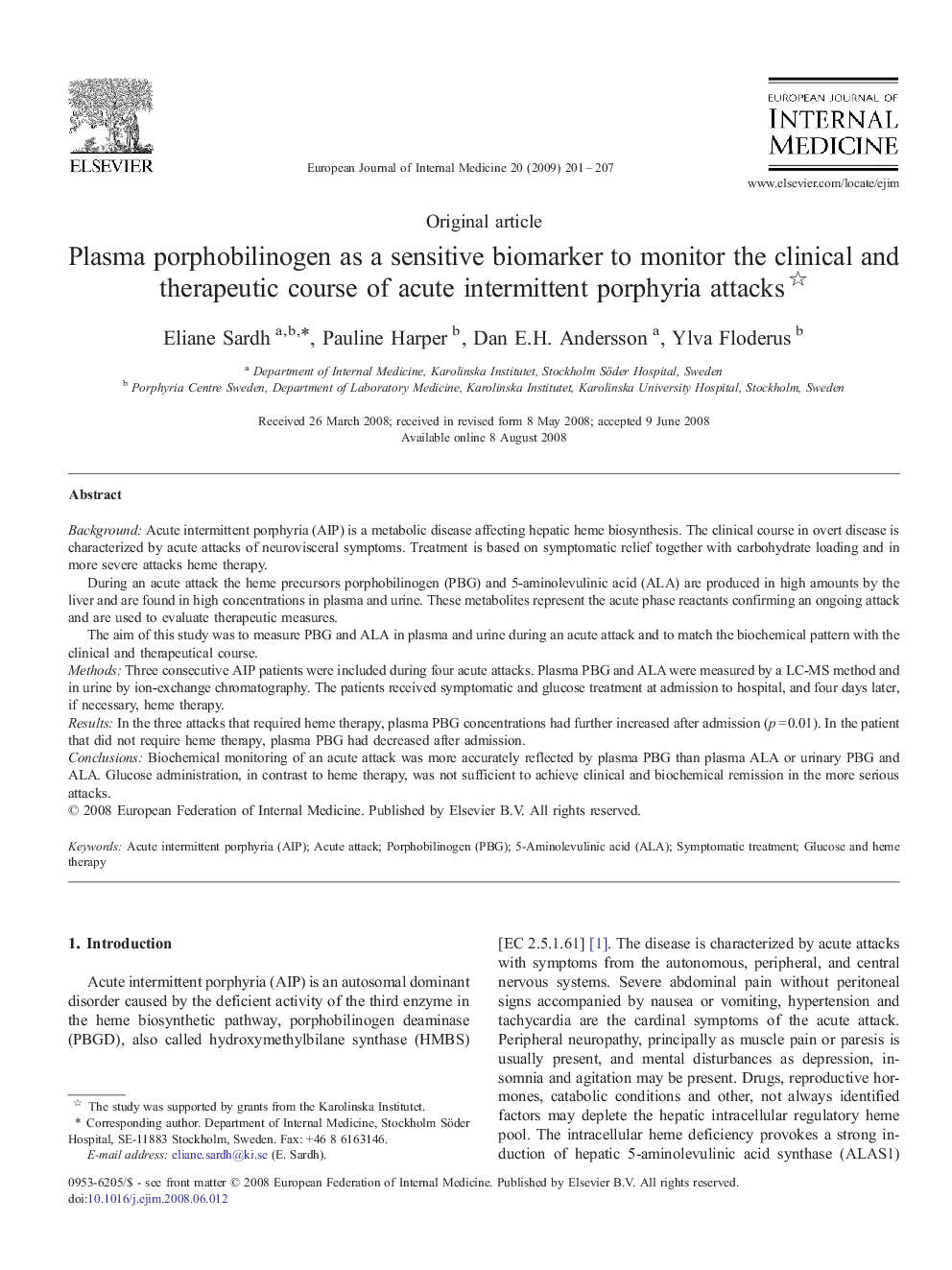| Article ID | Journal | Published Year | Pages | File Type |
|---|---|---|---|---|
| 3467692 | European Journal of Internal Medicine | 2009 | 7 Pages |
BackgroundAcute intermittent porphyria (AIP) is a metabolic disease affecting hepatic heme biosynthesis. The clinical course in overt disease is characterized by acute attacks of neurovisceral symptoms. Treatment is based on symptomatic relief together with carbohydrate loading and in more severe attacks heme therapy.During an acute attack the heme precursors porphobilinogen (PBG) and 5-aminolevulinic acid (ALA) are produced in high amounts by the liver and are found in high concentrations in plasma and urine. These metabolites represent the acute phase reactants confirming an ongoing attack and are used to evaluate therapeutic measures.The aim of this study was to measure PBG and ALA in plasma and urine during an acute attack and to match the biochemical pattern with the clinical and therapeutical course.MethodsThree consecutive AIP patients were included during four acute attacks. Plasma PBG and ALA were measured by a LC-MS method and in urine by ion-exchange chromatography. The patients received symptomatic and glucose treatment at admission to hospital, and four days later, if necessary, heme therapy.ResultsIn the three attacks that required heme therapy, plasma PBG concentrations had further increased after admission (p = 0.01). In the patient that did not require heme therapy, plasma PBG had decreased after admission.ConclusionsBiochemical monitoring of an acute attack was more accurately reflected by plasma PBG than plasma ALA or urinary PBG and ALA. Glucose administration, in contrast to heme therapy, was not sufficient to achieve clinical and biochemical remission in the more serious attacks.
